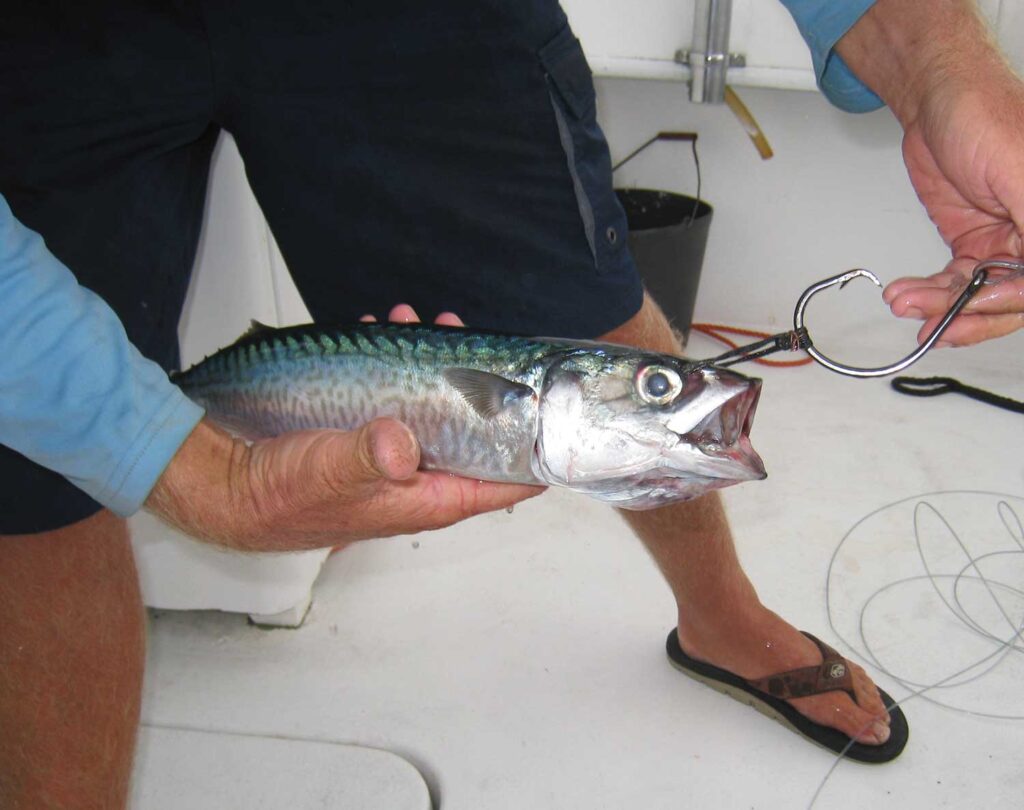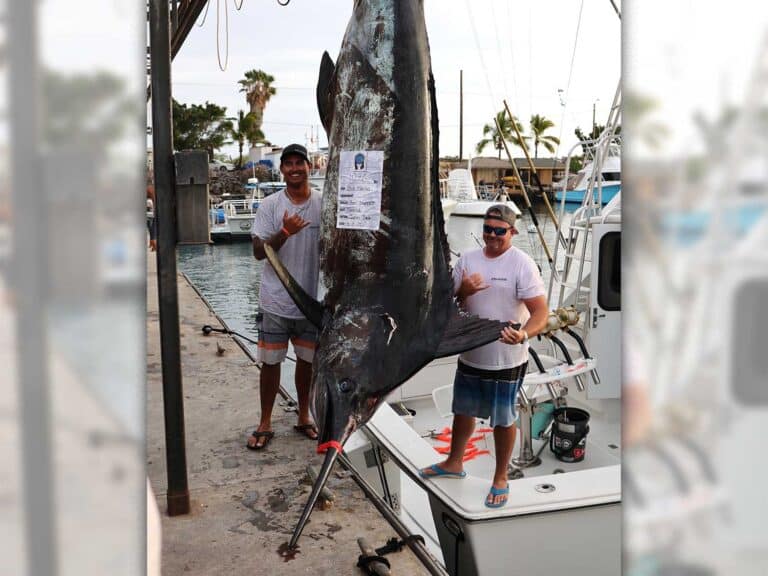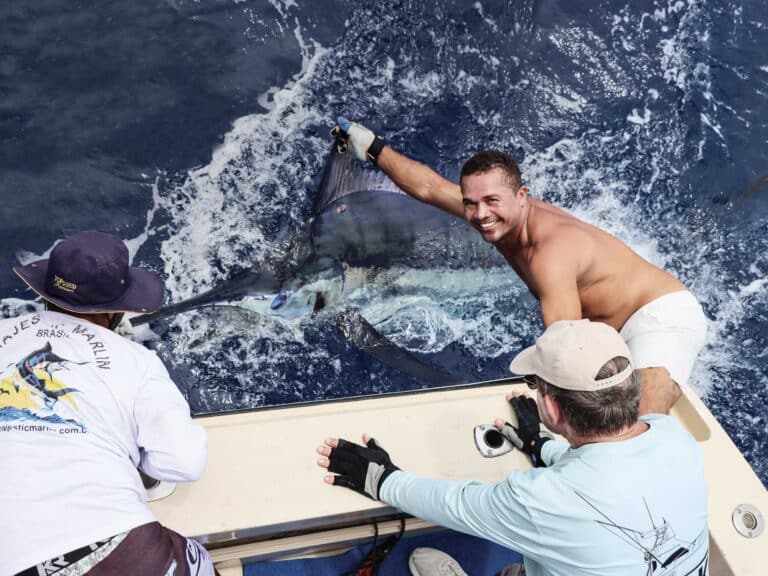
Special delivery: Sign up for the free Marlin email newsletter. Subscribe to Marlin magazine and get a year of highly collectible, keepsake editions – plus access to the digital edition and archives.
Is there anything more exciting than to hook a marlin while he’s eating out of the tailpipe—practically hand-feeding it with a live bait? I doubt it.
As we were cruising around the seamount, it didn’t take long to raise a hefty blue on one of the teasers. We quickly fed out a live bait as the boat slowed down to reduce the wash. With nowhere to hide, the nervous bait started sending out the “eat me” vibes, attracting a swift attack. The angler immediately felt the bite and the circle hook found its mark, creating an instant reaction. Spray flew in all directions as the fish exploded from the water, just feet from the transom. This unbelievable, in-your-face action is what big-game fishermen crave, and it’s what makes switch-baiting so appealing.
Any billfish is likely to tease with this method, and when the conditions warrant, we switch marlin with live bait—in this case, using mackerel. While the bait-and-switch technique is used around the world with dead baits, including in Australia, we also have great success switching marlin with live bait. I propose that this know-how can be used anywhere.
Bait It
The reef appeared to be alive according to the sounder, quickly indicating a huge school of mackerel in just 10 fathoms. Dropping a modified sabiki rig with a lead weight attached, we soon had some bites. Because loading up the rig with too many mackerel can leave it in a twisted mess, damaging the bait as you frantically try to sort it out, we cut off every other hook, turning the six-hook rig into a three-hook one to make the bait-catching process more manageable.
To keep the live mackerel in good condition, the baitwell needs to be of reasonable size so that they can swim around comfortably. The best way to keep them alive and ready to pitch is to store them head down in bait tubes with adequate water flow once they are rigged. A baitwell can be modified with plastic tubes, or external tubes can be purchased from most tackle stores and fitted to the vessel’s transom with a pump set up to provide the required amount of seawater.

Rig It
Today, most recreational anglers use circle hooks, although some stray when chasing potential records on light tackle. When using J hooks, the bridle/bridge length needs to be kept short so that the hook can’t turn back into the bait. Conversely, a circle-hook bridle needs to be much longer so that the hook has enough flexibility to turn, work its magic, and connect in the corner of the fish’s jaw.
To attach the bait, hold it firmly using either a damp cloth or a wet cotton glove. Whether you’re using a Dacron loop, a Bridle-Buddy or your preferred live-bait-bridling method, carefully place it back into the tube, and neatly wrap up the leader, securing it with a No. 64 rubber band to either the fighting-chair grip or the rod. The ends of the rubber band are held together with a piece of plastic tubing for a quick release—simply pull the tube to release the leader.
Because this method can be used with light, medium or heavy tackle, record fishermen will usually wait to attach the leader to the main-line swivel until they’ve determined the size of the fish they’ve teased. Either way, just be sure the bait is ready to go before the fish is teased into the spread.
Switch It
Many of the professional crews I’ve fished with who use this switching technique tend to have similar ideas and rely on only three or four teasers that are pulled reasonably close to the boat, making the entire process more manageable.
Running teasers off the rod tip from the transom corners allows the crew to be actively engaged in the tease, although these can also be run to the outrigger halyard for a larger footprint. The captain also engages fish with his own set of bridge teasers, so it truly is a team effort.

The most important point of this switch-baiting technique is to have the angler totally alert and on deck, watching and waiting for any sign of a billfish.
Once a marlin is raised, the captain will slow down and the teasers will be brought in. If the fish is focused on one of the bridge teasers, the outrigger lanyard should be pulled down so that the teaser is more in line with where the live bait will be presented. Slowing down the boat gives everyone in the cockpit a better look at the marlin because there’s less prop wash, but it won’t stop the marlin from following the teaser.
The angler needs to get the live bait out of the tube with one hand and release the leader trace from the rubber band with the other. The bait is then tossed over the transom, and the leader is fed out carefully to avoid tangling.
Then the angler will slowly let out the bait with the clicker on, which adds a little tension to help eliminate a backlash just in case the bait is piled on.
Read Next: Here are some step-by-step directions to rig live bait.
Once the marlin grabs the bait and the fish is engaged, clearing all of the unwanted tackle needs to be done quickly so that the captain can pull the boat out of gear and begin to chase the fish.
This up-close-and-personal high-energy technique is proved day in and day out in all parts of the world, so if you should find yourself in a location where fishing with live bait is legal, the bait is solid and the team is down to switch it up, I highly suggest you give it a go. You have nothing to lose, and a great experience to gain.







